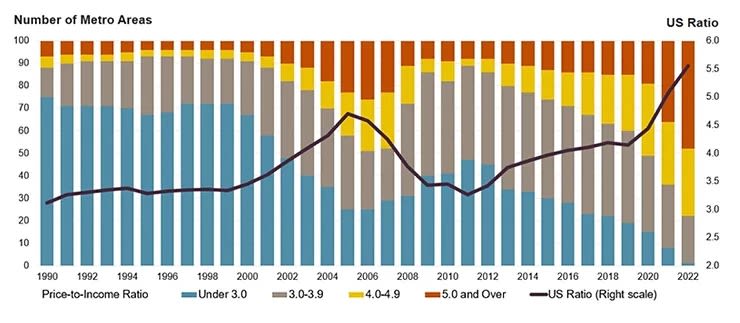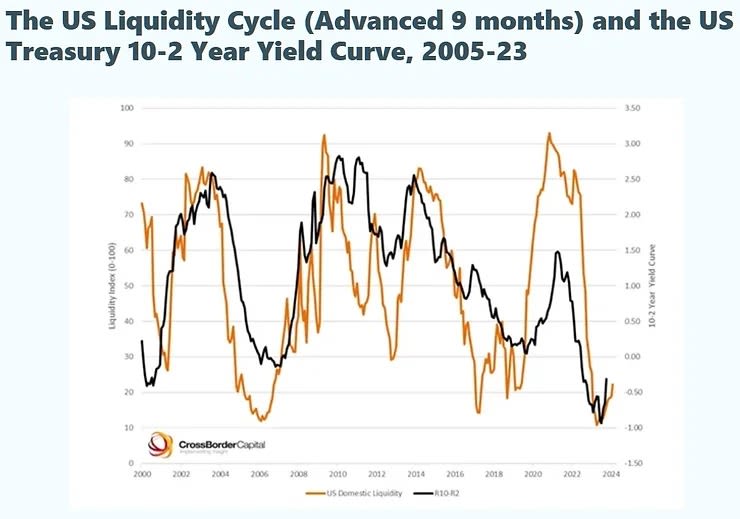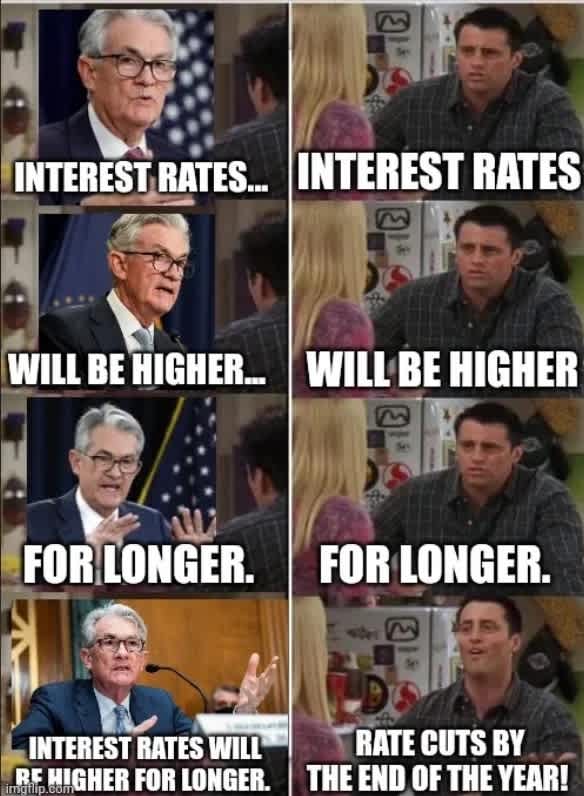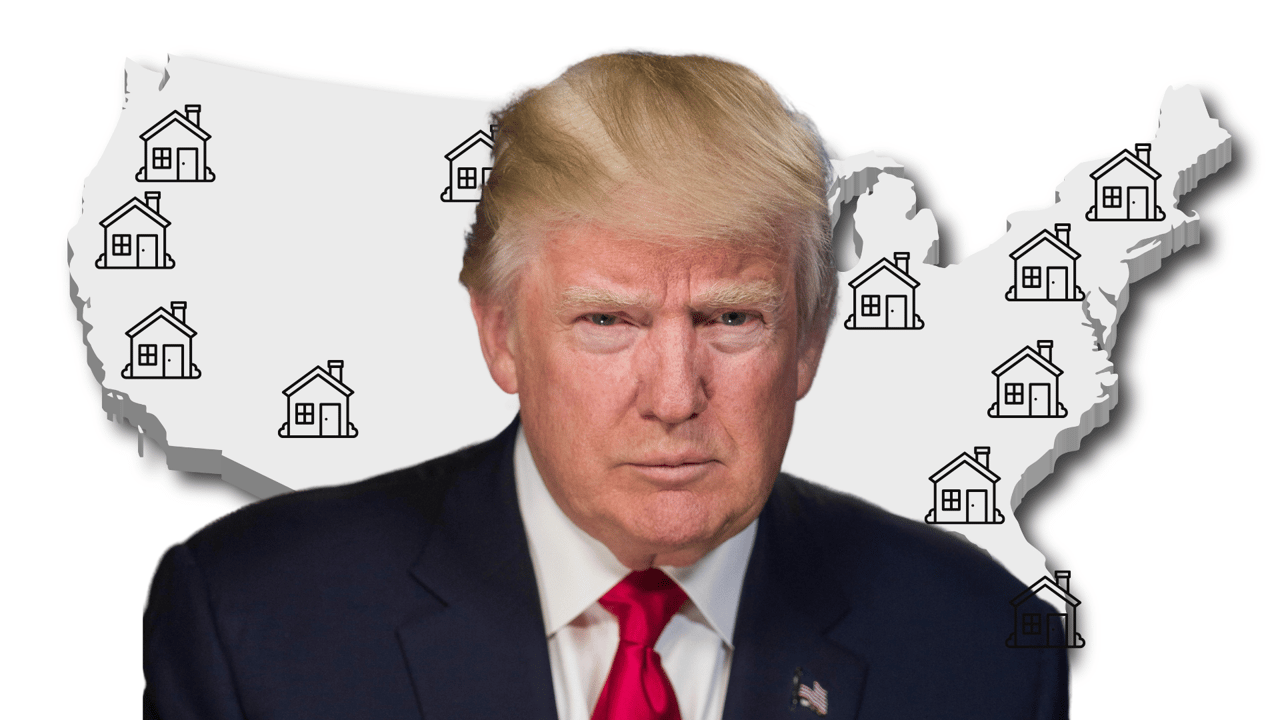How Long Can the Fed Hold Out? Where Are My Rate Cuts?
At the beginning of this year, the Fed had 4 rate cuts planned - assuming inflation stayed in check and hit its 2% target or lower. Well that didn't happen, and we're still at 3.5%-ish. The latest prediction is that there may be 2 rate cuts this year. If the inflation numbers don't drop in the next report, we might get none. That is a real possibility.
This has certainly cooled the housing market this year. Overall sellers are reluctant to drop prices, although that has been happening more as the year has gone on, and buyers want more of a discount than sellers are willing to give. We have a lot more transactions than usual that get close to going under contract and then fail because the buyer and seller are just unwilling to compromise further. We are seeing more closings that are happening due to an unavoidable need - like moving a family or changing states.
Mortgage rates have been pretty steady for the last six months - staying between 6.5% and 7%. They go up from there the worse your credit is. Historically this isn't a bad rate - rates were got up to 13% to 17% in the 1970s for example. However, last time rates were 6.5% to 7% (around the year 2000) the average home price was 3.5 times the average household income in the US. These days, the average home price is more like 5.5 times the average household income. So buyers are having to borrow a lot more compared to their income than in times past when we saw these rates before. Of course, this means buyers pay those higher interest rates on that higher relative amount as well.
The chart below only goes to 2022, and it has come down a small amount in 2023, but we're still in the same red zone. To make a realistic change in this curve we need more housing supply. The US needs about 1mill new homes per year to keep up with new demand and older homes passing out of useful life. We spent most of 2008 to 2016 falling far short of that 1mill new home starts mark, leading to a worsening lack of inventory since then. In order to build cheaply we need cheaper labor and materials. I don't see that happening until we have a significant recession.

.gov Is Between a Rock and a Hard Place
The Fed of course wants to keep inflation in check by keeping rates high enough to facilitate a "soft landing." Soft Landing = Interest rates that are not too high to cause a lot of financial pain, but not low so that inflation comes back. While the Fed is trying to do this, there is a very pushy gorilla at the lab door called "government spending." Debt to GDP is currently around 120%, the same as it was right after World War II. The difference now is that we are not set up in the economic golden zone like we were at the end of that conflict. Then we were the only industrial economy left standing and had just become the reserve currency of the world and were heading into a baby boom which created a growing younger workforce. Demographically we are now on the other end of that stick. Our population is aging and the workforce is shrinking. This creates more government spending and less productivity (decreasing population of young tax payers) = a bad combo. To make matters worse, the cost of our national debt is also going up as we refinance much of it to the now higher interest rates.

I like this chart because it takes some of the doom and gloom out of the headlines, but it's still not super rosy. Look at the slope of that increase, it is more dramatic than any of the other time periods in this chart. You hear about the debt to GDP ratio a lot like I just did, but the real number you want to look at is the US government interest payments as a portion of tax receipts in the chart above. This peaked out during the cold war to no surprise and we aren't as bad off now as we were then (at least in this metric), but it is still getting a little warm in the Treasury department. Now it's just a matter of can we reverse this trend in time with enough left over tax receipts + borrowing to keep the government machinery running.
Macro Picture
It's getting harder to sell US debt. Typically foreign nations are the biggest buyers of US debt which is used to fuel government spending. The other big buyer is the Fed which is currently not buying US debt as part of its policy to hold down inflation. The trip wire is when a US treasury auction fails to sell enough bonds to cover the governments expenses. Technically this has never happened since the first treasury auction in 1929. The rate that the government offers to pay for this debt could go up to make it more attractive to foreign investors, but that of course makes it more expensive for the US in the above chart which facilitates more borrowing ahh spiral.
In the event there were not enough buyers of US debt, the government would not fail, but rather it would dip into its limited cash reserves and also possibly tell the Fed to buy some of the debt. Either one of these events could radically shift the interest rate environment and would likely lead to more liquidity which means more inflation.
This is the needle the Fed is trying to thread, keep inflation low with higher rates and clearing the balance sheet of US debt in one hand, while borrowing from somewhere else to keep paying the bills. If those borrowers don't show up, then the Fed will have no choice but to provide liquidity which will undo their work on bringing inflation down. They will have to choose which bad outcome they want.

Liquidity is decreasing in the short term due to recent tightening, but increasing in the long term because industrialized governments with aging populations have no choice but to spend and take on debt to make up for falling productivity. While everyone is worried about this year rightfully so, think about the long game. Given the pressures I mentioned above, it is not likely that government will decide to drastically cut the budget, pay down the debt, and reduce the demand for liquidity in a meaningful way that would result in dropping the overall debt load.
It could happen, but I've only seen Congress do that once in the 1990s and it didn't last very long. If 3000 years of human history are any indication, we will ultimately print our way out of the problem in the long run.
Real Estate
Things feel tight right now for both buyers and sellers. Prices have come down from rising rates, and wages are growing but haven't caught up enough to close the gap. Right now we are in the pinch, but at some point, the government will be forced to increase liquidity to meet debt obligations which may come in the form of lower rates and or a bigger balance sheet of US debt on the Fed's books.
You may see headlines of a coming price crash, but in order for that to happen a lot of people need to list their homes for sale. Right now that motivation doesn't exist in my opinion. It happened in 2008 because people had no equity in their homes, there was an overbuilt supply of homes, and walking away from your loan was a pretty good deal on the balance sheet and that house became the bank's problem.
Today, home equity is still high. We do not have enough houses and not enough are being built, so the prices of homes are going to be a function of rates and liquidity. If the government is forced to lower rates or increase liquidity that will result in higher home prices. If rates can stay high and the Fed's tightening stays in effect longer then prices will slowly fall. What I can't tell (and perhaps no one can say for sure) is when those specific changes will happen.
As always, question everything and don't take suggestions as absolutes. These are written from a perspective of our experience and offer our insight, however limited. We're not perfect and get things wrong but not on purpose.




